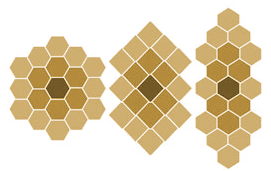
Citation
G.B. Blanchard, A.J. Kabla, N.L. Schultz, L.C. Butler, B. Sanson, N. Gorfinkiel, L. Mahadevan and R.J. Adams
Nature Methods 6:458-464 (2009)
Abstract
Abstract
The dynamic reshaping of tissues during morphogenesis results from a combination of individual cell behaviors and collective cell rearrangements. However, a comprehensive framework to unambiguously measure and link cell behavior to tissue morphogenesis is lacking. Here we introduce such a kinematic framework, bridging cell and tissue behaviors at an intermediate, mesoscopic, level of cell clusters or domains. By measuring domain deformation in terms of the relative motion of cell positions and the evolution of their shapes, we characterized the basic invariant quantities that measure fundamental classes of cell behavior, namely tensorial rates of cell shape change and cell intercalation. In doing so we introduce an explicit definition of cell intercalation as a continuous process. We mapped strain rates spatiotemporally in three models of tissue morphogenesis, gaining insight into morphogenetic mechanisms. Our quantitative approach has broad relevance for the precise characterization and comparison of morphogenetic phenotypes.
Figure sample

Cellular simulations of tissue morphogenesis. (a–c) Simulations of three cellular scenarios, demonstrating tissue outcomes for different combinations of cell shape change and cell intercalation. Focal cell is black, with first and second coronae of neighboring cells in dark and light gray, respectively. (d–l) Cumulative stretch ratios on a log scale versus time for examples in a (d–f), b (g–i) and c (j–l). Cumulative stretch ratios in vertical (solid) and horizontal (dotted) orientations are plotted for tissue (d, g, j) in black, cell shape (e, h, k) in dark green and cell intercalation (f, i, l) in orange.


